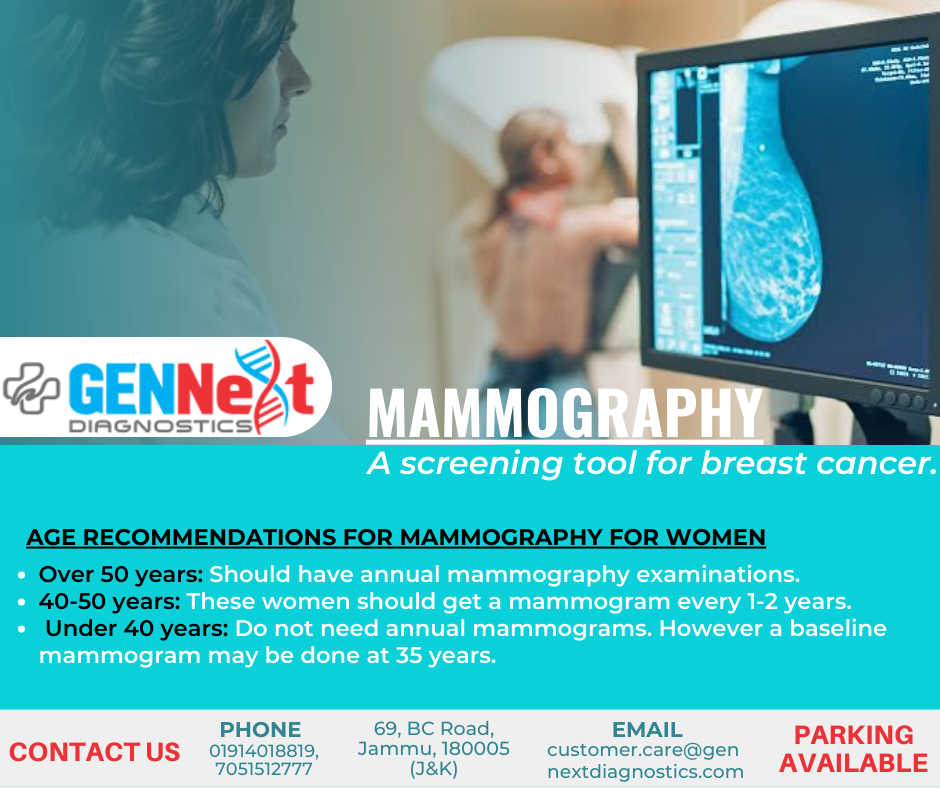Mammography is a screening tool for breast cancer. At GENNext Diagnostics we employ advanced digital imaging technology for the dual benefits of optimum diagnostic quality and maximum patient comfort. Mammography is important because in its earliest stages breast cancer may not be palpable; it may be too small to feel as a lump or tissue change. Mammography can help detect these changes two years or more before you would feel them. Physical examination is also important because pre-menopausal breast tissue is often dense and fibrous, which may decrease the reliability of mammography for young women.
Age Recommendations for Mammography for Women at Average Risk for Developing Breast Cancer

You may be at higher risk for breast cancer if:
- You have already had breast cancer, especially before menopause.
- You are genetically susceptible to cancer, i.e. you have close relatives with breast cancer.
- You are undertaking hormone replacement therapy. Unmarried women and those without children are also at risk risk.
Mammography FAQs
The radiation exposure with mammography is very less. Also if the pros and cons of mammography are weighed, the pros outweigh the cons by far. The radiation effect on the breasts decreases exponentially after 35 years of age. The only precaution to be taken is that the patient should be sure that she is not pregnant.
With newer equipment employed at GENNext Diagnostics very little discomfort is felt by the patient. The patient should preferably come after the period is over, as the likelihood of pain will be the least. However there will be no changes in the findings on mammography during any stage of the menstrual cycle.
Sonomammography is sonography of the breasts. At GENNext Diagnostics, it is usually done as a complementary procedure to mammography. It helps in distinguishing a cystic mass from a solid mass. Cysts are always benign. Mammography is required as the earliest of cancers are seen only on this modality.
It is not possible to tell 100% whether a mass is benign tor malignant on either mammography or sonography. To be 100% sure, a biopsy is required. Sonography and mammography, both together are 95% accurate in diagnosing a lesion.
The chances are 5-15% if it is a first degree relative particularly on the maternal side. The person is at a high risk & should start doing mammography 10-15 years earlier than the age at which the relative got breast cancer.
